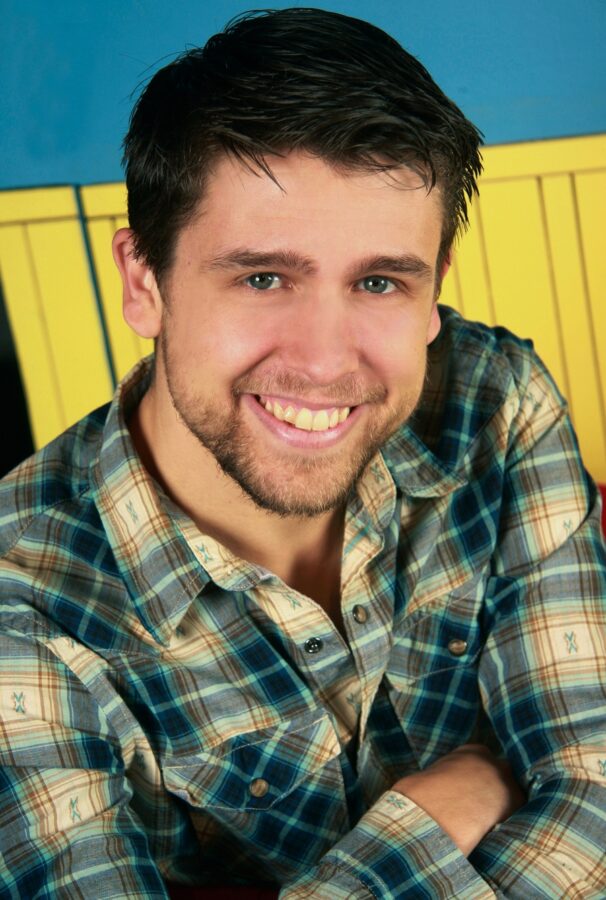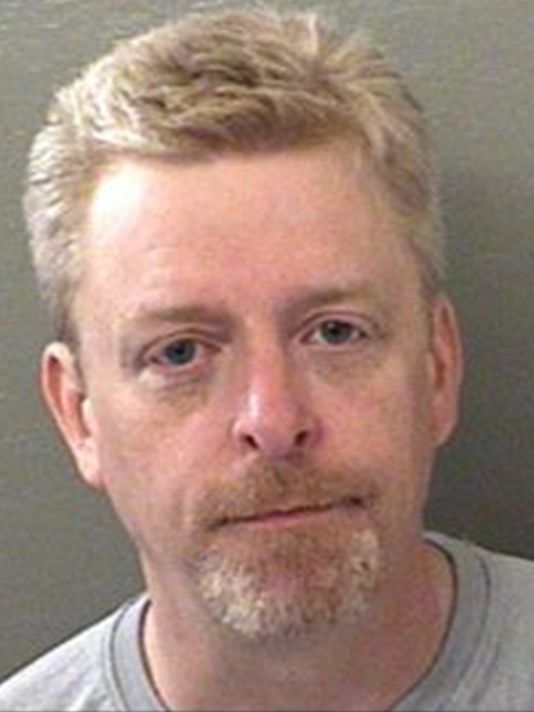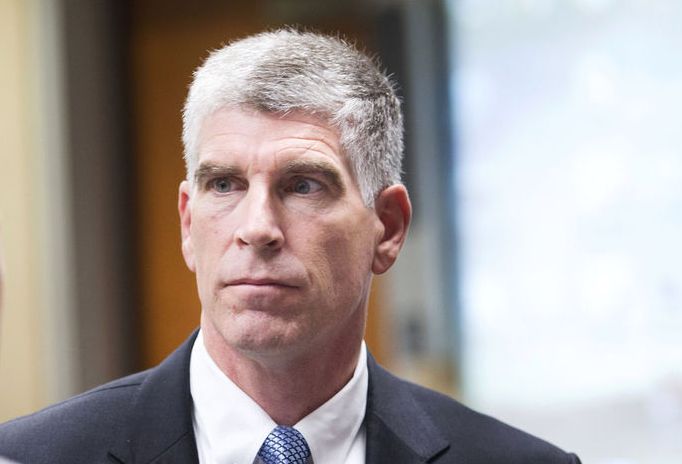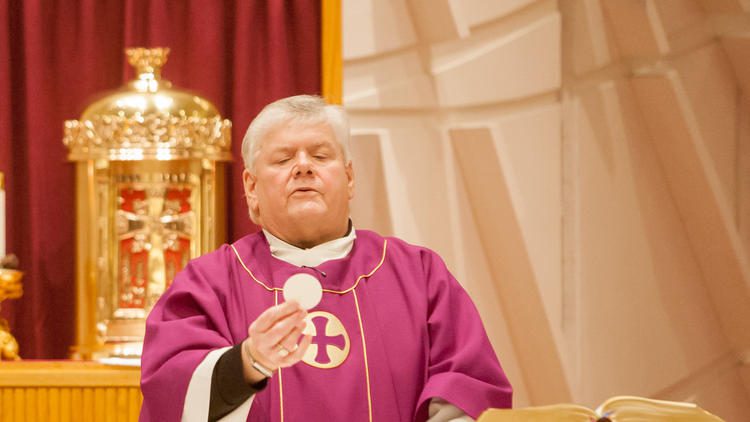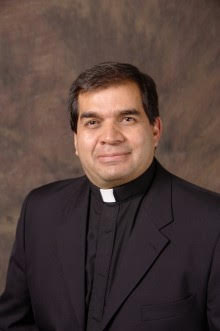
Guest post by Carol. For many years, Carol was a member of The Way. You can read Carol’s blog here.
1984 and onward: Loyalty, Hush, Aftermath, Freedom
In September, 1984, almost one year after moving back home, I married my current husband, who was involved with The Way on a local level and had been one of my Spiritual Partners (Way Corps trainees financed their training by soliciting people to donate funds. Contributors were called “Spiritual Partners.”) when I was in-residence. He provided a stable anchor for my life, for which I am eternally grateful. Through the subsequent years, we stayed busy meeting the challenges of me living with chronic illness, helping to care for my quadriplegic father, and raising our children.
Our first child was born in 1988 after a very rough pregnancy due to asthma. Our second child was born in 1990. After the children were born, I earned part time income through in-home childcare and later through sales with a few different multi-level marketing companies. For a number of years, I worked part-time at a large science center, and then as a preschool music instructor.
My husband and I chose to eclectically home school our children. Most Way followers did not home school, and it was not encouraged unless the parent overseeing the schooling had a teaching degree. My husband had a college degree, but not in teaching. I had only one semester of college, and I was the one who mainly guided our children’s education. In that respect, and a few others, my husband and I veered from the typical Way-parenting path.
From 1984 through the spring of 2005 (for me) and the spring of 2006 (for my husband), we stayed closely involved with The Way, serving at the local level and overseeing Fellowships for many of those years. Yet, we did not regularly approach Way leadership for specific personal counsel. For the most part we made our personal decisions in private and informed leadership if we deemed it appropriate. One example of that was our decision to home school.
Beginning in the mid-1990s The Way had a no-debt policy for Home Fellowship Coordinators, for The Way Corps, for any believer serving in the Way Disciple outreach program which had replaced the WOW program, and for any follower who wanted to take The Way’s Advanced Class.
In 1997, we sold our home on which we had a mortgage. Our mortgage had been under $500 per month. Our first rental home was over $900 per month, but we were debt-free. Between 1997 and 2003 we relocated our residence five different times in three different cities in North Carolina. It was exhausting. Two of the main reasons for our moves were to live geographically closer to believers in areas that were “spiritually hot” and to keep our rent payments reasonably low. My husband also had two different job changes during that time.
At our last move in 2003, after we had stepped down from running a Home Fellowship, we went against the no-debt policy and took out a mortgage. We did not counsel with leadership prior to our decision but did receive a personal visit from them afterward.
From the latter 1980s through the 1990s, The Way became more and more controlling, step by step endeavoring (and most often succeeding) to meddle deeper and deeper into followers’ personal lives. This widespread progressive micromanagement, especially regarding time, commitment and obedience to the Ministry, personal finances, and shunning those who left, was due mainly to control tactics and doctrines gradually instigated during L. Craig Martindale’s tenure as the second president of The Way, a position he held from 1982 until 2000. Martindale regularly hollered and ranted from the pulpit, warning us of the adversary and the spiritual battle and often blaming us for troubles in the Ministry.
Then toward the latter part of 1999, micromanaging and verbal abuse were relaxed. Within six months of this loosened grip, Martindale resigned as president after his public admission to Way believers that he had been involved in a “consensual affair” and due to an out-of-court settlement regarding (in part) sexual harassment.
Yes, the reigns were loosened. But the emotional, psychological, spiritual, verbal, and financial abuses were never adequately discussed or addressed. It was as if they never occurred or, at the very least, were unimportant. I’m not alone when I say there was an air of hush, making these abuses taboo to discuss. We were to heed the exhortation of Philippians 3:13 in the Bible; that is, to “forget the past, declaring it null and void.” For years after leaving that hush bothered me, especially that I had allowed myself to succumb to the muzzle.
Within a year or so of Martindale’s confession and dismissal, he quietly disappeared from The Way, out of sight to the faithful. Questions were discouraged which was standard when anyone departed – an uneasy hush with a pretense that nothing had happened and all was okay.
From 2000 onward, The Way became stagnant. I have described my last few years with The Way as “a flat tortilla shell with no substance.”
Between 1987 and 2000, there were four major crossroads when my husband and I had to decide whether or not to continue with The Way. At each crossroad, we believed our only alternative to The Way might be an ex-Way splinter group. It never occurred to us that we had another option: to walk away from all Way-related structure and doctrine. Due to our deeply held beliefs, we were blind to any alternatives outside of foundational Way doctrine which splinter groups, for the most part, held onto.
Some other determining factors were our deeply held belief that The Way was the “true Household of God” – to desert was to walk away from our heavenly father and from God’s true family; our belief that walking away would open up ourselves and our children to harm from “the adversary;” our decades-long investment of time, life energy, and finances into The Way; and trust in our leadership – for most of our time in The Way we had served with what we considered kind, honest leaders.
Each time, we had to make a choice of whom to trust. That’s really what it boiled down to.
Three of those crossroads coincided with three major Way exoduses when followers left en masse around 1987, 1989, and 2000. At each of those three crossroads, we chose to do whatever our immediate leadership chose to do, which was to stay with The Way. (Click here to access links about some of the history of The Way’s decline.)
The other crossroad was the most difficult. In 1995 our local Corps leadership, a married couple who were 1st Family Corps, were made “mark and avoid.” The Family Corps was a specially designed Way Corps program for adults with children. Children were called Mini-Corps or Junior Corps, depending on the age of the child. There was also a specially designed Way Corps program for retirees called The Sunset Corp “Mark and avoid” was The Way’s practice of shunning or excommunication. The phrase is condensed from Romans 16:17 in the King James Version of the Bible. Mark and avoid was a key factor in “keeping the Household pure,” which was one of Martindale’s obsessions. Sometimes a believer was put on “probation” prior to the mark-and-avoid status. During probation, the believer could not attend any Way functions, and worked with his or her direct overseers to correct whatever personal issues were involved. Any contact with other Way believers was limited.
It was a complex predicament for my husband and me. We had a bond with our local leadership. They had officiated our marriage in 1984, had helped me with my chronic health issues, had provided much emotional support when I left the Corps and after my Dad’s automobile wreck in 1983, and had provided child care numerous times for us, and we for them.
My husband and I had also developed a bond with our state leaders, a married couple who were early Corps graduates. During the one-year probation of our local leaders, we oversaw the local Household Fellowships. Throughout that time our state leadership became our direct overseers. The four of us visited each others’ homes and shared meals and prayer. My husband and I felt they were honest with us, though we never knew why our local leadership had been put on probation, other than it was something personal. Our state leaders were always kind and uplifting and left me feeling good about myself. They were well-respected in the Ministry and had held various top leadership positions. The wife had her masters in psychology. In 1994 and 1995 I had seen her regularly on a professional level, pro bono since I was a faithful believer. She helped me through a suicide episode.
Our state leaders and the local leadership had known each other for decades, since before The Way. They were good friends. Mark and avoid ended their relationship. It ended ours too, with our local leadership. We chose to follow the state leaders’ decision of mark and avoid and to continue with The Way. My heart grew crustier after that choice. (Click here to read a memoir piece that shares a bit about that time in our lives.)
Around 2003, my husband and I learned that the “affair” Martindale had confessed to followers in 2000 was not consensual and that there were multiple sexual encounters. (Lawsuits Against TWI and Allegations of Sexual Misconduct)
After I left in 2005, we learned that other top leaders had been aware of or involved with the abuse of authority in regard to sex; it had been rampant among the inner circle of top leaders. Yet, Martindale had taken the full brunt of the fall while some of those other top leaders stayed or rose in their leadership positions.
As of 2005, outside of Martindale’s so-called “consensual affair,” most loyal followers were unaware of the many other illicit sexual allegations involving other top leaders including the founder, Victor Paul Wierwille, who had died in 1985. We had previously heard of some, but not all of the reports of sexual misconduct. And we greatly doubted those we had heard of. It wasn’t until after we left that we became aware of the number of abortions women in The Way had received. (Why Didn’t We Know About Leaders’ Sexual Advances?)
If followers heard about some of these allegations, we dismissed them as lies or rumors or innuendo directed by “the adversary.” Beginning in the late 1990s, followers were charged to stay off any sites on the internet that were critical of The Way. Fear of becoming possessed or influenced by devil spirits was one controlling factor. We had been well-indoctrinated regarding devil spirits; it had been Martindale’s focal subject through the years of his presidency.
As of 2006, Way followers I had spoken with blamed solely Martindale, once highly respected and loved by followers, for The Way’s early-2000s upheaval which led to more loss of followers. From my viewpoint in hindsight, top Way leaders used Martindale’s fall as an opportunity to save their own faces in the eyes of Way followers. Martindale was their scapegoat, though he was also guilty.
Since 2000 Way leadership appears to have kept itself clean in regard to sexual abuses.
Leaving The Way
In October, 2005, after 28 years of loyalty and serving as a lay leader at various levels for over fifteen of those years, I exited The Way. But this time was not in AWOL fashion as I had attempted two times before in previous decades. Rather, while trembling, I informed our husband-and-wife Limb Leaders via phone about my decision. My husband joined the conversation via a second phone extension in our house. I wanted a witness.
The Limb Leaders’ responses were that perhaps I needed to be going to more functions and wasn’t giving enough; that I should have counseled with Way leadership before making my decision; that if I had sincerely prayed and contemplated, I would have chosen to stay with The Way; that The Way had experienced some problems through the years not unlike the first-century church; that most followers who leave never return; and that I was welcome to come back at any time.
But no one could convince me to continue. An incident with my son earlier that month had catalyzed my decision. Plus, during that past year or so, my heart had become a vast, empty hole. I felt like a shell of a person. I wanted to feel whole again.
Earlier that October, my then fifteen-year old son, his eyes damp with tears, said to me, “Mom, I feel empty inside.” That was it. That vast hole in my soul was not only affecting me, it was affecting my children. Or maybe my son was growing his own vast hole. At that point, I had to leave.
Through the previous couple of years, one of the main reasons I had stayed with The Way was for my family and children. I was afraid that if I left we would become splintered because we wouldn’t be likeminded on the Word. It was one of my biggest fears. And then, when I left, it was for my children. Not to say that there weren’t other reasons, but the incident with my son was the deal breaker.
I already had a quasi-exit plan. For five months, since May, 2005, I had been seriously researching how to exit, in case this time would come. I had to figure out whom I could trust. Again, that’s what it boiled down to. (Click here to read a memoir piece about when I received a letter in May that was a linchpin in my exit strategy.)
Over the subsequent eight months after my departure, my husband and our children (at the time ages fifteen and eighteen) cut allegiances with The Way. Our son drifted away within a couple months after my official exit. My husband officially left at the end of March, 2006. And our daughter quit going to Fellowships around May, 2006. (Click here to read a letter my husband sent Rosalie Rivenbark, president of The Way at the time, shortly before his departure.)
To leave was a tormenting decision riddled with internal chaos. In my mind, by choosing to leave, I would be playing the Judas role three times (the number three Biblically representing “complete”) and breaking a salt covenant (“worthy of death” according to Old Testament standards) which I had taken in 1981 at a Way Advanced Class Advance.
Cutting ties via an official exit in 2005 had begun at least seven years prior, but I didn’t realize that at the time. Around October, 1998, I had begun journaling, and I didn’t stop. For the previous sixteen years, I had beaten myself up with shame and berated myself over being unable to believe God for healing of my chronic health issues. The Way taught a health-and-wealth gospel, though The Way would never call it that. (Click here to read about that doctrine helping to drive me to the brink of suicide.)
By 1998, I was no longer able to stuff my inside turmoil into oblivion. The only thing I knew to do was, to write and write and write. Darkness, emptiness, pain, grief, self-loathing. It poured onto the page, which led to writing about hopes and dreams.
I quite literally wrote my way out of The Way.
I left The Way via one of the ex-Way splinter groups which was vital in helping me with my exit and later with my husband’s exit. Though we only continued with the group for about one year, we will always be thankful for their help.
Within a couple months after I left, I got deeply involved for over a year with an ex-Way online forum which provided much needed support and connections. However, I later found myself in a web of unhealthy relationships with some of the key participants and in a maze of suspicion which included false or mistaken allegations toward myself and others. The experience got under my skin, and at times I was filled with rage over (what appeared to me at the time as) hypocrisy. I felt like I was witnessing aspects of The Way but on the other side; we defectors as a group were not that much different than loyalists as a group. Years later I came to realize that the us-them mentality is a human condition and one we can easily fall into. In spite of those experiences, I still think the forum provides excellent support and information for people seeking help in leaving The Way. And I would handle my circumstances and relationships differently now, in 2017, from when I was still fresh out of The Way.
Life After The Way
In July, 2008, I hired a licensed mental health therapist who specialized in cult recovery. The main reason I hired him was because of what had happened at the ex-Way online forum. Two years later, in September, 2010, due to boundary violations (none were sexual), I filed an official complaint with the therapist’s state licensing board. It was one of the hardest decisions of my life, and I had no idea the can of worms I had opened.
Almost a year after I filed the complaint, the therapist viciously attacked me online with false allegations and accusations in multiple rants and articles complete with my photograph. A few months after that, I learned that I wasn’t the only client he had harmed.
In January, 2014, his license was revoked. He was found guilty of professional misconduct along with negligence, incompetence on more than one occasion, and unprofessional conduct. (Click here to access an overview of events and links to more details regarding my experience with the therapist.)
The experience with that therapist was deeply traumatizing. On some levels, it was worse than The Way. One of my friends, who also experienced therapist abuse (but not with the same therapist), calls it “sanctuary abuse” – an apropos term, in my opinion. As of 2017, I am still working through the trauma.
Not surprisingly, I no longer participate with any ex-Way splinter groups, ex-Way online forums, or cult-recovery groups. My only involvement with cult-awareness involves a few contacts, sharing on my blogs, and a small amount of social media.
In spite of the manipulations in The Way, I had many good experiences – times filled with rich learning and “God moments,” regular exposure to some excellent teachings and teachers, and relationships with some wonderful people, an ongoing one being with my husband of over three decades.
For years I struggled with the question, How could something I thought was so good turn out to be so evil? The good and evil dichotomy was difficult to wrap my mind around as I’d try to reconcile it.
I have since learned the good and evil can’t be reconciled. That may seem obvious to most people. But it was a harsh reality for me to recognize and accept that top leaders whom I deeply trusted were emotional, psychological, spiritual, financial, and sexual predators concerned primarily with their own appearance, advancement, and power.
Since exiting, I’ve cycled, and recycled, through a myriad of emotions including periods of bitterness and rage, a deep sense of overwhelming loss and grief and loneliness, identity issues, the feeling of being shattered, and feelings of shame and self-blame regarding certain personal decisions and my blindness to manipulations. There have been times when I’ve felt very lost. There have been times I’ve doubted my departure and have missed the camaraderie with Way believers; there are still good people who remain loyal to The Way.
On the flip side, I’ve discovered freedom to think for myself and to consider ideas outside Way doctrine. My relationship with my husband has been restored; we were on the brink of divorce during our final years in The Way. Our family has grown closer, instead of further apart. Our children have been able to pursue life without the constraints of Way practices and doctrines. Some personal friendships that were shunned from decades past, due to The Way’s “mark and avoid” doctrine, have been renewed. I’ve probably received more answers to “prayer” since leaving The Way than during my whole twenty-eight years of loyalty combined. I’ve learned to reasonably trust myself again. Music and poetry, writing and art, nature and animals have become integral parts of my life. I continue to discover what my opinions are, my likes and dislikes, and how to express those. Over time, I began to experience a groundedness and quietness in my soul that perhaps comes with age. In hindsight, I felt stuck in adolescence while in The Way.
My Way experiences and my responses since leaving are not atypical for a cult devotee. In discussing The Way with ex-members of other authoritarian groups and from reading accounts from various books and articles and comparing those with my and others’ experiences in The Way, I’ve learned that The Way was not unique in its approach to group-think, control tactics, and practices resulting in emotional, spiritual, and other abuses. Neither were the so-called high times and “God moments” unique to The Way. All are common factors within authoritarian groups.
Way followers’ experiences can differ (sometimes widely) depending on their local leadership, their depth of involvement, and the years they were involved. Cults are like onions, with outer and inner layers. The closer to the center, the firmer the grip. The Way exemplifies that.
Within seven months of leaving The Way, I got a job working as the manager of an art studio. That job was one of my best therapies as I communicated with artists of all stripes from all over the country. As of 2017, I still work as a studio assistant, but I stepped down from being the manager around 2011 when I established a pet-sitting business which has been successful and another therapeutic outlet.
By the end of 2009, my physical health had improved to the point that I was able to take up my teenage dream of long-distance hiking and backpacking. But, in 2011, that dream was indefinitely suspended when I developed widespread nerve damage, a loss which I have deeply grieved and am still coming to terms with. As of 2017, managing the nerve damage is my biggest life challenge.
Upon leaving The Way in 2005, I visited a few churches, but nothing resonated. For about a year I was involved with an ex-Way splinter group. For a few years thereafter, I leaned toward Christian Universalism. Throughout that time, I was reading about various schools of thought regarding different beliefs, including atheism. Eventually I began to see the Bible as other written works; that is, as historical literature instead of the “God-breathed Word.” I had landed in the agnostic camp.
It took me until around 2010 to really accept that I no longer believed the scriptures to be infallible nor to be the inerrant Word of God. It took another five years to become comfortable with my agnosticism. For now, in 2017, I’m happy with that.
But I’m even happier that I can reasonably trust myself again, that I’m continuing to learn who I am and what I like, that I’m able to live without constantly battling shame and guilt, and that I’m becoming my own best friend.
And I’m most happy that my family remained intact after leaving The Way, and that our children are not living under the constraints of Way doctrines and practices.
For the most part, life is good, and certainly much larger than when I was a Way believer.
I hope my story gives readers a glimpse into the life of a loyal cult devotee, an ex-cult recoveree, and a human who continues to explore and discover and grow, living life along the way…
Share This Post On Social Media:



